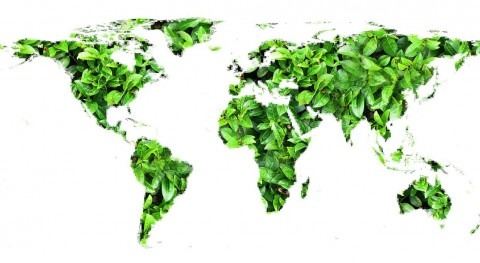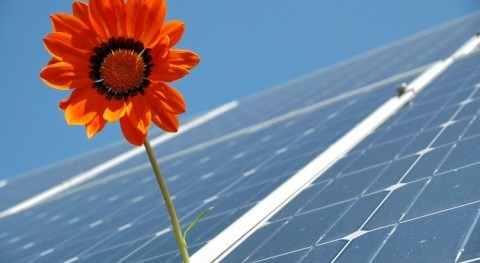Water security around the world is at risk from climate change, rapid urbanisation and economic growth, increased demand for energy and food as well as other trends impacting water quantity and water quality necessary for both human and environmental use. Some of the key statistics that highlight how water-insecure the world is includes:
- 4.5 billion people currently lack access to sanitation that meets the requirements of Sustainable Development Goal 6
- 2.1 billion people lack access to safe drinking water
- Water-related scarcity could result in some regions in the world losing as much as 6% of their GDP by 2050
- Meanwhile, by 2030, water demand is projected to outstrip supply by 40% due to a range of challenges including climate change, rapid population and economic growth, urbanisation, and rising demand for energy and food
So how can we achieve water security?
Water security can be achieved when we have successfully managed water and related services to:
1. Satisfy household water and sanitation needs in all communities
2. Support productive economies in agriculture, industry, and energy
3. Develop vibrant, liveable cities, and towns
4. Restore healthy rivers and ecosystems
5. Build resilient communities that can adapt to climate change
Five dimensions of water security
Expanding on this, the 5 dimensions of water security are:
1. Household water security
The foundation and cornerstone of water security is what happens at the household level. Providing all people with reliable, safe water, and sanitation services should be the top priority everywhere around the world. Household water security is an essential foundation for efforts to eradicate poverty and support economic development.
2. Economic water security
Water is required to grow food, power industry, and cool energy-generating plants. As such, understanding the interlinkages and the trade-offs of the water-energy-food nexus is a key aspect of ensuring water security.
3. Urban water security
With the world rapidly urbanizing, and cities being important drivers of the global economy, water needs to be better managed to ensure cities are liveable and resilient to future climatic shocks.
4. Environmental water security
Human well-being and livelihoods are dependent on healthy rivers and ecosystems. A healthy environment purifies our water, mitigates droughts, protects us from floods, and moderates our climate. Without nature, we face a world with less water, water of poorer quality, and at times too much water that places human life and infrastructure at jeopardy.
5. Resilience to water-related disasters
90% of natural disasters are water-related and climate change will only make disasters more frequent and severe. As such, communities need to become resilient to extreme events. This means they need to adapt to a changing climate and be able to reduce risk from natural disasters related to water. All of which minimizes the impact of future disasters.
So why, despite knowing all these dimensions of water security, and setting a sustainable development goal to achieve it, do we still face water insecurity around the world?
Simply put, having enough good quality water for humans and nature is not a given in many parts of the world. This is because, while we may have made technological advances in improving water quality and enhancing water efficiency in domestic and industrial processes, many of these technologies have not been mainstreamed and our infrastructure that ensures the adequate supply of safe water is aging or just simply lacking.
In fact, there is a gap between the amount of investment required to achieve water security and what is actually raised: Currently, we need to invest $1.7 trillion to achieve Sustainable Development Goal 6, but we are only investing a third of this at the moment.
Even in countries such as the United States, Canada, Australia, the UK and many others, there is a gap between the amount of investment made and what is actually required to maintain and expand the water infrastructure. For example, in the U.S. alone, the American Water Works Association estimates that $1 trillion is required to maintain and expand service to meet demands over the next 25 years.
This gap in investment to achieve water security is not because of poor rates of return, with money going down the drain. Rather, it is estimated that the benefit-cost ratio for investments in water and sanitation services is as high as 7–1 in developing countries.
So why is there a gap between the amount of finance required to achieve water security and what is actually invested in nearly every country?
There are many reasons for this, including:
- Water is typically undervalued and not properly accounted for by investors
- Water services are usually under-priced, resulting in poor cost recover for water investments
- Water infrastructure is capital intensive, with high sunk costs, so initial investments need to be very large
- Water provides many benefits, many of which are hard to monetize
- Lack of appropriate analytical tools and data to help guide water-related investments
- Water projects are usually very context-specific, raising transaction costs
Case: Nordic Investment Bank’s new Nordic-Baltic Blue Bond
In January 2019, the Nordic Investment Bank traded its first Nordic-Baltic Blue Bond. The five-year SEK 2 billion bond will focus on investments within water resources management and protection. The bond, targeted at sustainable investors, will focus on projects including wastewater treatment, prevention of water pollution, and water-related climate change adaptation. The bond focuses on the Baltic Sea as human activity is putting pressure on marine and coastal waters from agricultural activities as well as from urban development. One project funded is the upgrade of Turun seudun puhdistamo Oy’s wastewater treatment plant in Turku, Finland. The bond will modernize the city’s existing wastewater treatment plant, separating the wastewater from the stormwater discharge systems, enabling the utilization of the full wastewater treatment capacity during extreme weather conditions. This will reduce overflows of untreated wastewater as well as the nutrient and microbiological load on the environment. The microbiological load will be further reduced by installing effluent disinfection units.







